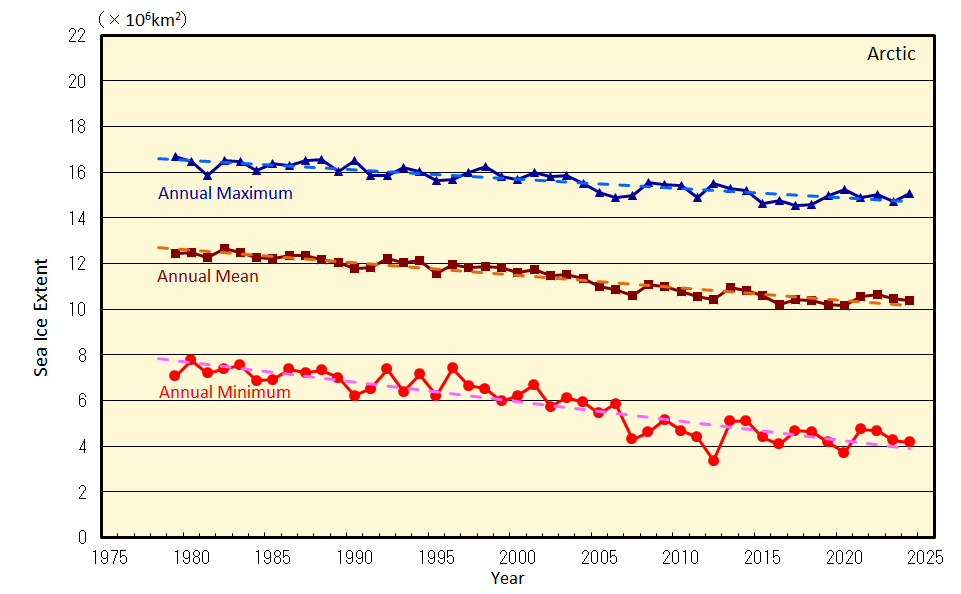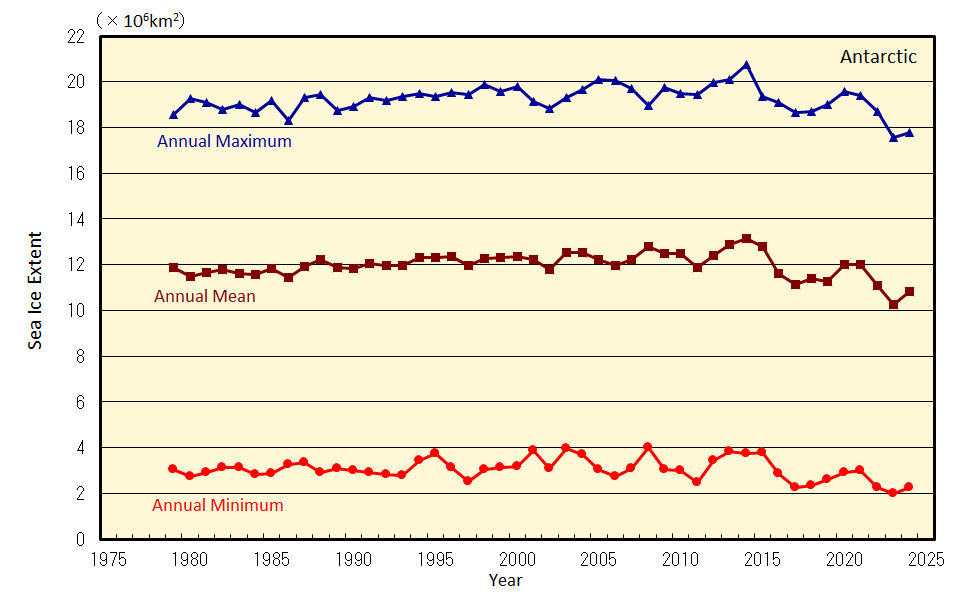Updated on 4 Feb. 2025
Japan Meteorological Agency
The sea ice extent in the Arctic Ocean has shown a long-term trend of decrease since 1979. The change in the annual minimum sea ice extent is particularly notable, with a yearly reduction equivalent to the area of Japan's northern island of Hokkaido.
There has been no discernible trend in the Antarctic Ocean.


Time-series representations of annual maximum, mean and minimum sea ice extents in the Arctic Ocean (including the Sea of Okhotsk and the Bering Sea) and the Antarctic Ocean from 1979 to 2024
The solid blue, brown and red lines indicate the annual maximum, mean and minimum sea ice extents, respectively. The dashed lines indicate the linear trends of each value. Sea ice extents are calculated from brightness temperature data provided by NASA and NSIDC (the National Snow and Ice Data Center).
It is virtually certain that there has been a long-term trend of decrease in the sea ice extent in the Arctic Ocean since 1979. The change in the annual minimum sea ice extent is particularly notable, with a yearly reduction of 0.085[0.073-0.096] x 106 km2 up to 2024 (numbers in square brackets indicate the two-sided 95% confidence interval), which equates to the area of Japan's northern island of Hokkaido (0.083 x 106 km2).
Meanwhile, there has been no discernible trend in the sea ice extent in the Antarctic Ocean since 1979.
It was reported in IPCC AR6 WG1 (2021) that human influence is very likely the main driver of the decrease in Arctic sea ice area between 1979-1988 and 2010-2019 (decreases of about 40% in September and about 10% in March) . It was also reported that in 2011-2020, annual average Arctic sea ice area reached its lowest level since at least 1850 (high confidence) and late summer Arctic sea ice area was smaller than at any time in at least the past 1000 years (medium confidence). On the other hand, it was reported that there has been no significant trend in Antarctic sea ice area from 1979 to 2020 due to regionally opposing trends and large internal variability.